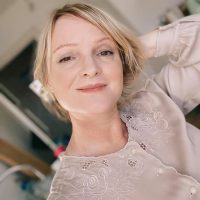During his 7-day workshop in Copenhagen, Denmark, I had the fortunate opportunity to squeeze in a café Americano (times two) with level-2 authorized Ashtanga yoga teacher, David Robson.
The topic of discussion: Ashtanga yoga, of course, and how the practice itself can seem quite daunting for beginners as well as critics, the curious and even experienced practitioners.
i. There are Yogis and then there are Ashtangis. Really?
David: Ashtangis are considered ‘extremists’ maybe, but extreme on the side of yoga. Ashtangis, by following the prescriptions of tradition, tend to be very committed to this practice. It can seem that when we say one thing works, we are saying another thing doesn’t, but that’s not the case. All yoga is yoga; Ashtanga Vinyasa Yoga is a particular path and it works, but that doesn’t necessarily mean any other path is any less effective.
“Admire the work, not the asana.”
ii. You need to be physically fit already to practice Ashtanga, fact or fiction?
David: It is a demanding practice and I don’t believe anyone should start by doing the entire primary series. To just do a led class, I think it could be pretty hard for most people and most beginners. Things like age, overall health, strength and flexibility may impact how quickly someone learns the practice, but these factors become insignificant over time. You have to take the time to let your body adapt to the practice and you gradually build up at your own pace. The mysore-style teaching format is really the perfect way for a beginner to learn yoga, as it starts from scratch and develops according to the abilities of the individual. I totally believe that anyone can practice and take benefit from Ashtanga Vinyasa Yoga.
iii. Establishing a practice…how many days a week?
David: The six days a week (except on moon days and Saturdays) does seem intense, but it’s a big part of the practice. I often tell my students that if you have to, do less more often. A steady practice will help us bring steadiness into the rest of our lives. Yoga is medicine, and it’s important to take it as prescribed. It’s the antidote to ‘halahala’. However, you have to start somewhere so you do what you can do. Any practice is better than no practice. It also helps if you have a community around you that is doing the same thing – it becomes much easier.
“(Yoga) It’s a total transformation – if you want to do it, it’s guaranteed that it will change everything.”
iv. The duration of practice…how long should it be?
David: Practice typically takes an hour and a half to two hours. You keep adding asanas, but once you pass a certain point, you split and do the next series. The duration of a practices changes according to what series, i.e. primary, intermediate, etc. is being done.
v. Getting up EARLY – how early?
David: Get up as late as you can (he says this with a smile). Don’t get up at 3am in the morning if you don’t have to. Brahma Muhurta – about an hour before the sun rises, is the most auspicious time to practice. Doing your practice before your day starts, when everything is quiet and before everyone else is up, allows you to set your ‘intention’ and your day’s course first thing in the morning. You have this time to practice everyday, you don’t have to fit it in later.
“Me getting up early is doing what it’s supposed to. It’s creating non-attachment and non-worldliness.”
vi. Do you have to visit Mysore?
David: It would be good if you could. When I found out that you could go to Mysore and study with the source, I was excited about it. If you are really interested in Ashtanga, I think it’s very important, and I’d recommend it.
“Integrating yoga into your life makes everything else all the more possible.”
David’s Copenhagen, Denmark workshop was held at Astanga Yoga Studio.
David Robson leads one of the world’s largest Mysore programs at Ashtanga Yoga Center of Toronto (AYCT). For more information, please visit the AYCT website.










Read 29 comments and reply